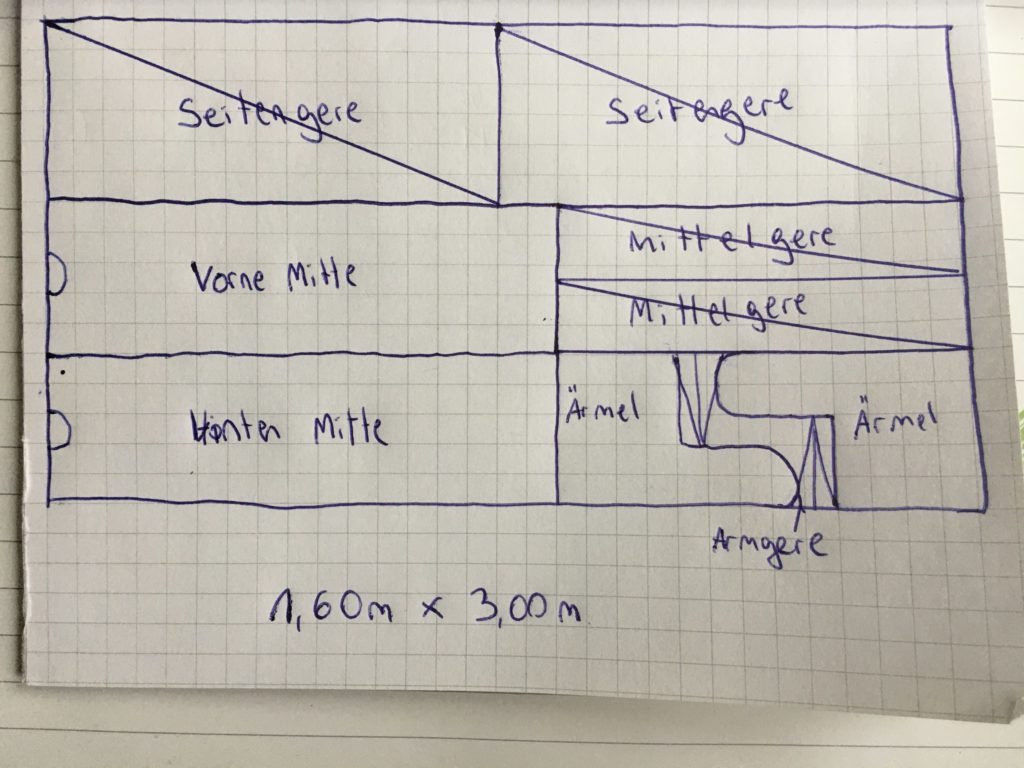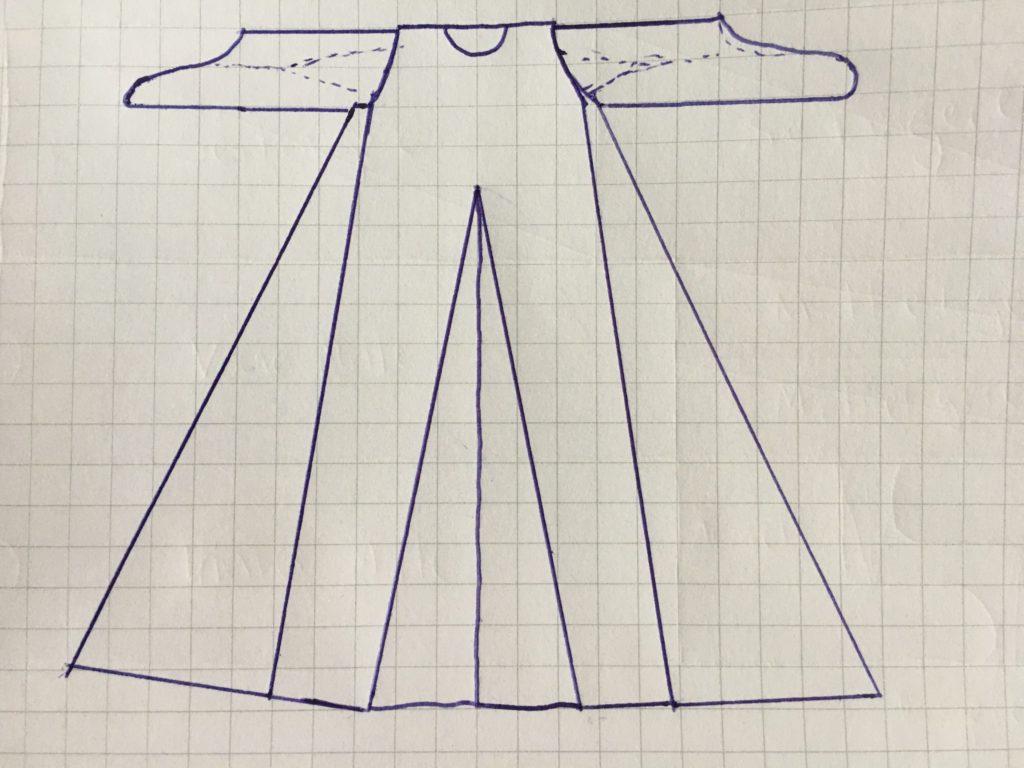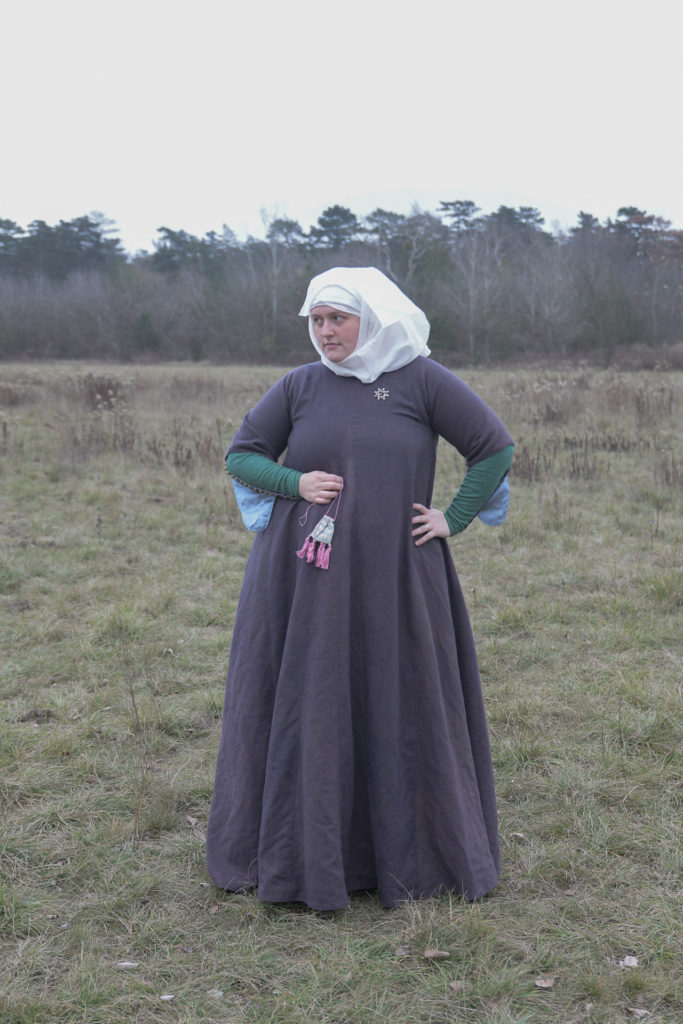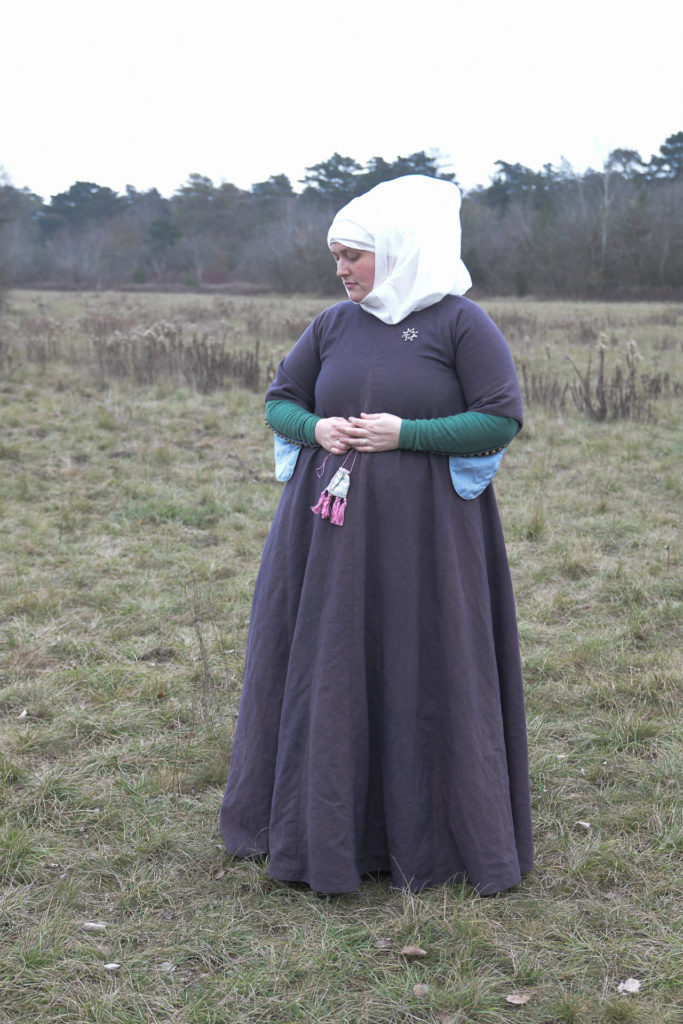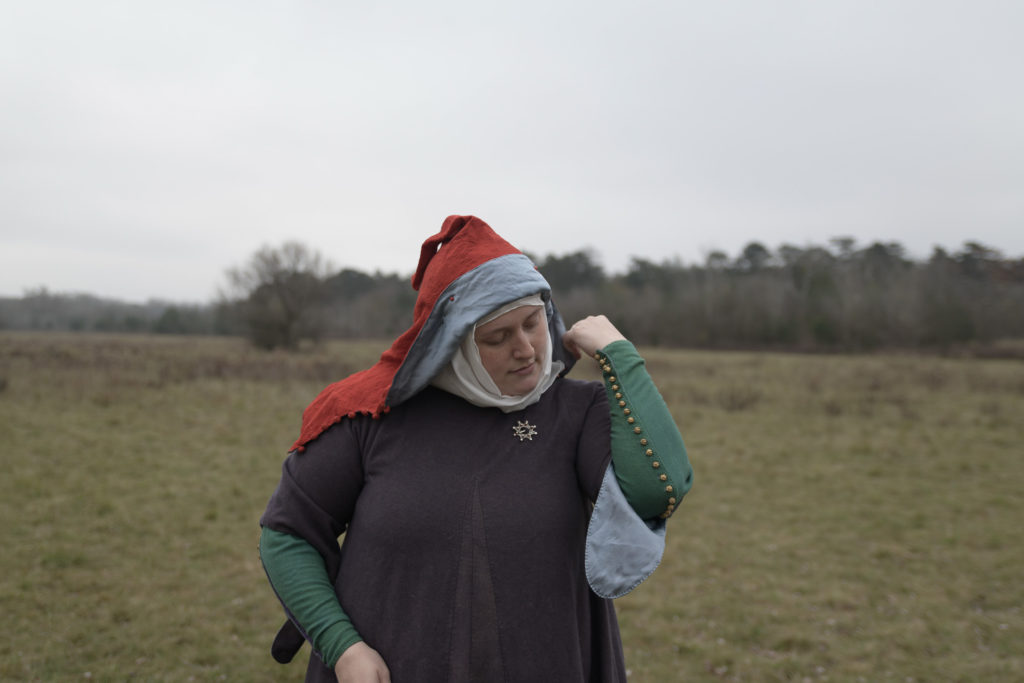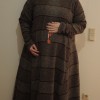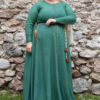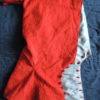Practical, old fashioned, decent – A Surcot from 1350
When reconstructing medieval life, especially medieval clothing, one needs to maintain a fine balance. Especially if one is not 20 any more, you have more options for going about your impression. Because there were without question those who did not follow the latest fashion, those who work hard, who are very religious or who generally follow more conservative views of fashion. We know of those people when we read moral texts from our period, when we read sumptuary laws, inheretance registers and mundane letter correspondences.
But the decision, which elements to choose for a certain point in time and a certain region in order to appear conservative or fashion-forward, is difficult. You choose between profane and religious art, between what moral writers condemn and what they propagate, between local tradition and foreign influence.
At the moment I am planing a very unusual surcot for my 1350s wife of a well-off crafter. When researching, I did however come across many overdresses that were quite conservative, loose cut and not exactly what other countries in this time already had to offer. So without question, there was still a large trend for that kind of clothing in my area as well.
So I decided, in order to extend my repertoire, i should also make a version of a surcoat that mirrors this world view and started an inbetween project.
The following pictorial sources were my main inspiration:
Lilienfelder Chronik around 1349: Here and Here and Here
This is really the earliest form of a tippet surcoat. When stretching the arms to the sides, they almost look like diagonally cut armholes, but from the front you can already see the spoons forming. You can see that the drape of the garments torso is very wide and loose, while in the same document, other figures are already much further ahead fashionwise, as we can see in this picture here .
In other works of this time (between 1340 and 1350) we can also see surcots that have a very light or no tailoring in the waist area and that fall wide and loosely from the chest area downwards, more like 13th century silhouettes. For example here and here and here and here and here.
I drafted a fairly simple pattern with which I used up the 3 meters of wool that I had in full. Here you see my pattern schematic (I decided to add my schematic in my blogposts in the future because I always come across people who are lost without professional patterns and who have a very complicated way of thinking about medieval clothing, while it is really very easy and triangles and rectangles are all you need before making last adjustments on your body.):
Using all of the fabric also means that you can absolutely not make any mistakes when sewing which did me a disservice this time since I made the armholes too small and had to cut new arm gores from the very little leftovers. This is how you put those pattern pieces together:
I explained how to set in the sleeves in this tutorial with a schematic.
The material is a plant dyed wool twill and plant dyed silk for the linings. I sewed the dress with plant dyed silk thread. The seams are butterfly seams mostly, so they lay nice and flat.
And this is the final result, fotographed in the windy Tundra of the Danube wetlands. I was honestly relieved that the silhouette doesnt make me look too fat. I usually dont mind to look not so attractive in my reenactment garb, but it isnt even the case this time :-D I am very proud of the silhouette, especially with the neat fitting of the sleeves.
For these photos (expertly taken by my husband <3), I used a very conservative veil model with a chin veil. Usually I would wear a women’s hood in such temperatures, but that is something for more fashion forward women in the illuminations. I had it with me nevertheless and swoop! Just like that it becomes a fashion forward mid-1330s Viennese impression :-D
Related Posts
The following posts might interest you as well:




